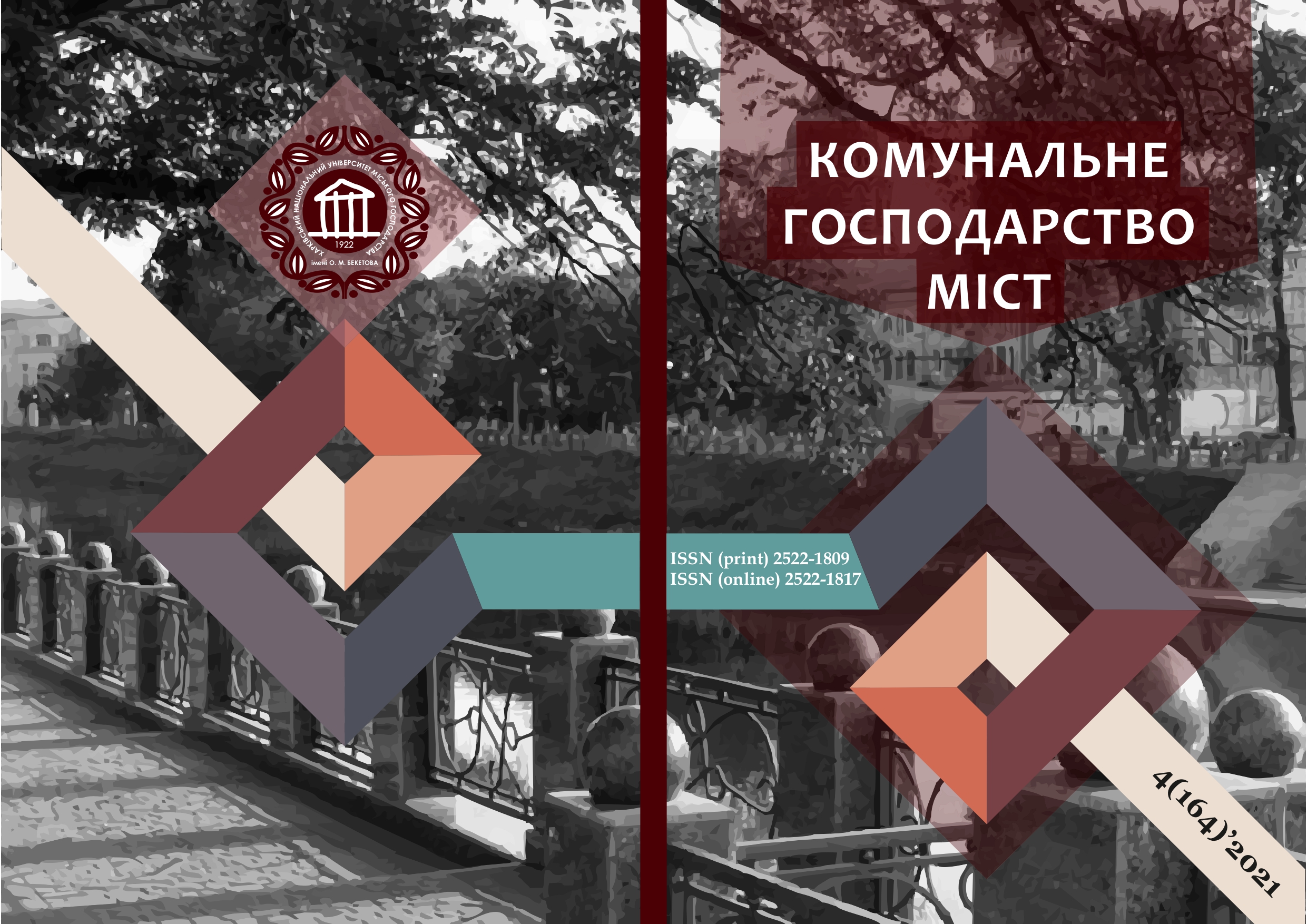INSTALLATION FOR DETERMINATION OF HEAT RELEASE OF HEATING RADIATORS
Array
Keywords:
heat transfer of radiators, natural circulation, heat losses.Abstract
To calculate the share of thermal energy consumed by this apartment in an apartment building, it is necessary to determine the heat transfer of all heating radiators in the house. But the heat transfer given in the passport of the heating device corresponds to the temperature pressure equal to 70K. Often the owners install non-standard devices, so the problem of determining the heat transfer of heating radiators in real conditions is relevant. Thermometric method, which is called electric, is widely used for laboratory determination of heat transfer of heating devices. Water by means of the pump circulates through an electric copper and the investigated radiator. The heat output of the latter is defined as the difference between the supplied electrical power (boiler power plus pump) and heat loss. The purpose of the work is to develop and study the operation of the installation for determining the heat transfer of heating radiators, which had a simpler design and could ensure proper measurement accuracy. We have proposed a scheme and design of the installation for determining the heat transfer of electric heating radiators, which differs in that it does not include a circulating pump. Water in the system circulates under the action of gravity due to changes in the density of the coolant during heating and cooling. This greatly simplifies the circuit by eliminating not only the pump but also the valve and the air outlet valve. The heater chamber is made of a steel pipe with a diameter of 88 mm. A steel cover is attached to the lower flange, through which a 1-1.5 kW heater is introduced into the chamber. Two 1/2 ″ sections of pipe are welded to the body of the heater chamber, through which the radiator is connected by means of rubber couplings. The cylindrical surface of the chamber on top of the layer of internal insulation is covered with a shielding heater, the temperature of which is maintained equal to the surface temperature of the heater chamber in the middle part. A layer of external thermal insulation is installed on top of the shielding heater. To determine heat loss, the radiator is disconnected from the heater chamber, plugs are installed and insulated. In stationary mode, the dependence of the heater power on the temperature of the heater chamber is measured, which determines the power of heat losses. The simplification of the installation has led not only to its reduction in price, but also to an increase in accuracy due to the reduction of heat losses and the simplicity of their definition.
References
2. Sravnenie pokazatelya teplootdachi radiatorov otopleniya – tablica i sravnitel'nyj analiz [Comparison of the heat transfer index of heating radiators – table and comparative analysis]. Available at: https://otepleivode..ru>otoplenie (accessed 02.07.2021)
3. EN442 Teplovaya moshchnost' otopitel'nykh priborov [EN442 Thermal power of heaters]. Available at: https://mlynok.wordpress.com/2010/05/22/стандарт-en-442-тепловая-мощность (accessed 02.07.2021)
4. GOST R-2016 EN442-2:2014. Pribory otopleniya bez vstroennogo istochnika tepla. Radiatory otopleniya i konvektory. Chast' 2: Metody ispytanij i zadannaya moshchnost' [GOST R-2016 EN442-2:2014. Heating devices without builtin heat source. Radiators and convectors. Part 2: Test methods and rating]. Available at: http://www.techemenergy.ru/upload/GOST_%D0%A0_EN_442_2_2014_2.pdf (accessed 03.07.2021)
5. GOST R 53583-2009. Pribory otopitel'nye. Metody ispytanij [GOST R 53583-2009. Heating devices. Test methods]. Available at: https://docs.cntd.ru/document/1200079428 (accessed 03.07.2021)
6. Gerashchenko, O.A. Osnovy teplometrii [Basics of thermometry]. Kyiv, Naukova Dumka, 1971. 192 p.
7. Krasnov, V.A. Pat. No RU 71378 Ustrojstvo dlya ucheta teplovoj ehnergii v otopitel'nykh sistemakh [Device for accounting for thermal energy in heating systems]. 2008. Bulletin No 7.
8. Amangeldy, A.G., Akhmetov, A.A., Ermolaenko, M.V., Kasymov, A.B., Zolotov, A.D. Issledovanie ehffektivnosti teplootdachi otopitel'nykh priborov [Research of efficiency of heat transfer of heating devices]. Young scientist. 2019, 21 (259), pp. 89–92.
9. Krasnov, V.A., Aleksanyan, I.Yu., Ermolaev, V.V. Ustanovka dlya sravneniya ehntal'pijnogo i teplometricheskogo metodov opredelenie teplovoj ehnergii v otopitel'nykh priborakh [Installation for comparison of enthalpy and thermometric methods of thermal energy limitation in heating devices]. Herald of ASTU. 2011, 1 (51), pp. 51–55.
10. Ivashina, Y.K., Zavodyannyi, V.V. Pat. No 146270 Prystrii dlia vyznachennia teploviddachi radiatoriv opalennia [Device for determining the heat transfer of heating radiators]. 2021. Bulletin No 5.
Downloads
Published
How to Cite
Issue
Section
License
The authors who publish in this collection agree with the following terms:
• The authors reserve the right to authorship of their work and give the magazine the right to first publish this work under the terms of license CC BY-NC-ND 4.0 (with the Designation of Authorship - Non-Commercial - Without Derivatives 4.0 International), which allows others to freely distribute the published work with a mandatory reference to the authors of the original work and the first publication of the work in this magazine.
• Authors have the right to make independent extra-exclusive work agreements in the form in which they were published by this magazine (for example, posting work in an electronic repository of an institution or publishing as part of a monograph), provided that the link to the first publication of the work in this journal is maintained. .
• Journal policy allows and encourages the publication of manuscripts on the Internet (for example, in institutions' repositories or on personal websites), both before the publication of this manuscript and during its editorial work, as it contributes to the emergence of productive scientific discussion and positively affects the efficiency and dynamics of the citation of the published work (see The Effect of Open Access).

